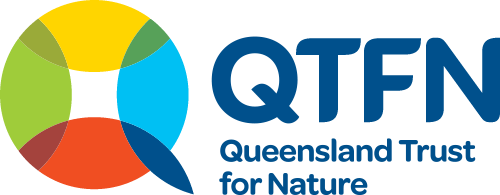Our regional reach
We work across Queensland’s diverse bioregions with targeted strategies for effective conservation and improved biodiversity.
Queensland has 13 bioregions, from coast to desert and tropics to cool southern highlands. Each has its own landscape patterns, climate zones and distinct groups of plants and animals.
At QTFN, we focus on ecologically significant spaces, species and wildlife corridors across these bioregions for maximum impact – working on private, public, QTFN-owned and Traditional Owners’ land.
Brigalow Belt
Cape York Peninsula
Central Queensland Coast
Spaces:Avoid Island Nature Refuge
Species:Flatback Turtle
Channel Country
Desert Uplands
Einasleigh Uplands
Gulf Plains
Mitchell Grass Downs
Mulga Lands
New England Tableland
Species:Brush-Tailed Rock-Wallaby, Koala
North West Highlands
South East Queensland
Spaces:Aroona Station, Koala Crossing
Species:Brush-Tailed Rock-Wallaby, Grey-Headed Flying-Fox, Koala
Wet Tropics
Spaces:, Cassowary Connection Nature Refuge, Daintree Lot 83, Gurrbum Nature Refuge
Species:Ant Plant, Cassowary, Mahogany Glider
Action & Insight
Passing protection onto our partners at Gurrbum Nature Refuge
Excitingly, this year we sold Gurrbum Nature Refuge to our partners the Community for Coastal and Cassowary Conservation (C4), an organisation dedicated to protecting and preserving the unique biodiversity of the Wet Tropics region. C4 co-invested with QTFN to purchase this precious property in 2019. Over the last five years, QTFN and C4 have been […]
Meet Australia’s little otter, the Rakali
Meet the Rakali – a charming native animal that calls South Bank home. Often referred to as ‘Australia’s little otter’, rakali have a beautiful golden tummy and white-tipped tail. They also swim in a way that often has them mistaken for platypus. This Australian native can be found right in the heart of Brisbane, at […]
Waterways for Wildlife: One tree at a time
On 11 April, six members of the QTFN team headed out to Aroona Station to plant 300 trees. The trees were planted along a water course that is threatened by erosion and will benefit from more vegetation. Our Waterways for Wildlife project at Aroona aims to widen our riparian buffers to improve habitat quality, […]

